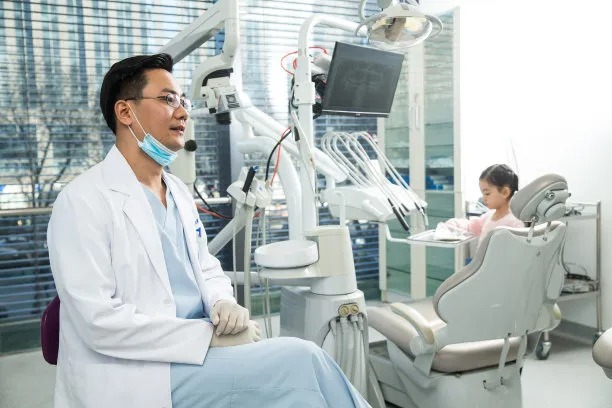Exploring the Benefits and Innovations in Dental Implant Treatment for a Natural Smile Restoration Experience
Summary: Dental implants have revolutionized the field of dentistry, providing patients with a reliable and aesthetically pleasing solution for tooth loss. This article explores the various benefits and innovations in dental implant treatment that contribute to an enhanced natural smile restoration experience. We highlight the advantages of dental implants, technological advancements, the healing process, and the long-term benefits they offer to patients. By understanding these crucial aspects, prospective patients can make informed decisions about their dental care, ultimately restoring function and confidence in their smiles.
1. The Advantages of Dental Implants

Dental implants provide a multitude of advantages over traditional dentures and bridges. One significant benefit is their durability; when properly cared for, implants can last a lifetime. Unlike removable dentures, implants mimic the functionality of natural teeth, allowing patients to eat, speak, and smile without discomfort or fear of slippage. This permanence offers psychological benefits, improving self-esteem and confidence drastically.
Additionally, dental implants help in preserving jawbone density. When a tooth is lost, the supporting bone can begin to deteriorate. Implants act as a replacement root, stimulating the bone and preventing the atrophy associated with tooth loss. This not only maintains facial structure but ensures better oral health in the long run.
Moreover, dental implants facilitate easier oral hygiene compared to traditional dentures. Patients can brush and floss just like they would with natural teeth, leading to a more effective maintenance routine and a lower risk of gum disease and cavities. Overall, the advantages of dental implants make them a superior option for tooth replacement.
2. Innovations in Implant Technology
Modern advancements in dental implant technology have significantly enhanced the treatment experience. One notable innovation is 3D imaging and computer-guided implant placement, which provide a high level of precision in the positioning of implants. This technology allows for customized treatment plans, ensuring optimal placement that leads to improved functionality and aesthetics.
Furthermore, the introduction of mini dental implants has expanded options for patients with less dense bone structure. These smaller alternatives are less invasive and require less recovery time, making them an appealing choice for those who may not be perfect candidates for standard implants.
Another exciting development in this field is the use of advanced materials for implants. Biocompatible materials, such as titanium and zirconia, promote better integration with bone tissue, leading to enhanced stability and longevity of the implants. These innovations collectively contribute to a smoother and more effective treatment process.
3. Understanding the Healing Process
The healing process following dental implant surgery is crucial for successful integration. Post-surgery, patients typically experience a period of osseointegration, where the implant fuses with the surrounding bone. This process can take several months, and understanding it helps set realistic expectations for recovery.
During this time, patients are often advised on what foods to avoid and how to maintain oral hygiene without disturbing the implant site. Follow-up visits with the dentist are essential to monitor healing and ensure the implant is integrating properly. Pain management strategies, including prescribed medications, can help make the recovery process comfortable.
Engaging in a healthy lifestyle, such as maintaining a balanced diet and avoiding smoking, can significantly enhance the healing process. By following the dentists recommendations, patients can look forward to a successful outcome, resulting in a beautiful and functional smile.
4. Long-Term Benefits of Dental Implants
Investing in dental implants also brings long-term benefits that extend beyond immediate aesthetic improvements. They result in long-lasting oral health, as discussed previously, they prevent bone loss and support the overall structure of the jaw. This results in a more youthful appearance, favorably impacting self-esteem and confidence.
Dental implants also contribute to better oral function and diet. With implants, patients can enjoy a wider variety of foods, contributing to a healthier lifestyle. The stability of implants allows individuals to chew and taste food more effectively, which enhances their eating experience.
Finally, dental implants are cost-effective in the long run. While the initial investment may be higher than other tooth replacement options, the longevity and durability of implants mean fewer replacements and maintenance costs over the years. Patients can save money while enjoying a natural-looking, fully functional smile for years to come.
Summary:
Overall, dental implants represent a significant advancement in the realm of dental treatments, merging functionality with aesthetic appeal. By addressing factors such as advantages, technological innovations, the healing process, and long-term benefits, this article highlights the comprehensive value of dental implants. As dental technology continues to evolve, more patients can access these life-changing solutions, restoring their smiles and confidence.
This article is compiled by Vickong Dental and the content is for reference only.



